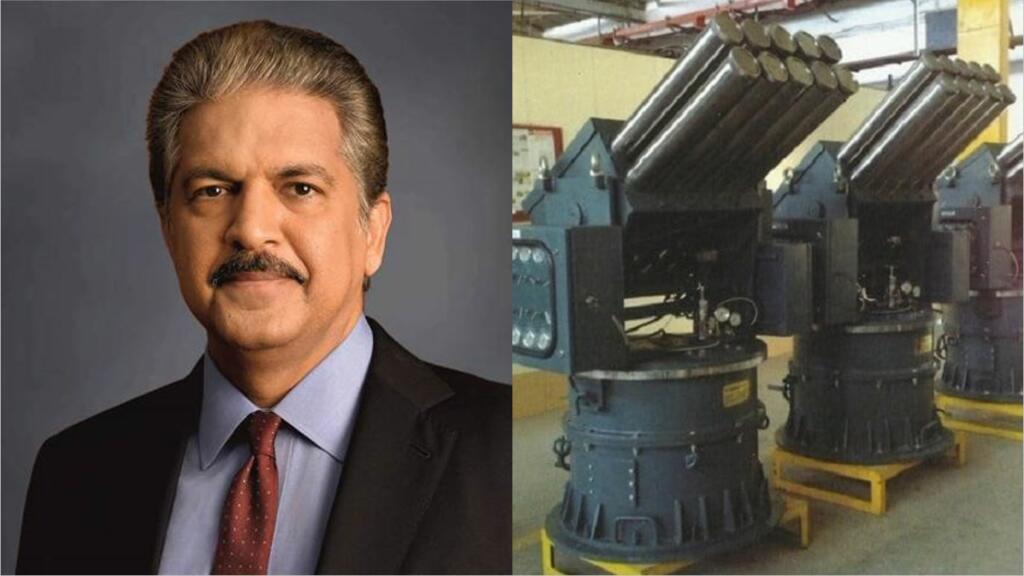In a major boost to the ‘Make in India’ and as a corollary, the ‘Aatmanirbhar Bharat’ campaign — the Indian government has granted Indian auto giant Mahindra & Mahindra Ltd and its subsidiary Mahindra Defence Systems Limited (MDS) a contract worth Rs 1,349.95 crore for the manufacturing of Integrated Anti-Submarine Warfare Defence Suite (IADS) for modern warships of Indian Navy.
The state of the art defence system will enhance the anti-submarine warfare capability of the Indian Navy. The IADS comes with an integrated capability for detecting enemy submarines and torpedoes at extended ranges as well as diverting incoming torpedoes fired by enemy submarines. The technology would help thwart the underwater attacks with much greater ferocity, and in turn, protect valuable assets such as the Navy ships.
After bagging the contract, Mahindra said in a statement, “MDS won the bid which was through an open tender put out by the Ministry of Defence (MoD) with the systems fielded put through exhaustive and detailed trials at sea to prove their capability,”
Mahindra Defence Systems Ltd Chairman SP Shukla lauded the Aatmanirbhar Bharat campaign by stating, “It is the first major contract with the private sector meant for underwater detection and protection from threats. This contract once again epitomises the success of the Aatmanirbhar Bharat initiative.”
As reported earlier this week by TFI, just like Mahindra & Mahindra, another private indigenous firm named Economic Explosives Limited (EEL) reposed the faith shown by the government and delivered the first batch of India-made multi-mode hand grenades (MMHG).
The development of the grenade was made possible following the transfer of technology from the Terminal Ballistics Research Laboratory of Defence Research & Development Organisation (DRDO).
Union Defence Minister Rajnath Singh had lauded the Indian company and its feat stating, “I am delighted that the production was approved in March 2021 and within five months more than one lakh grenades have been manufactured even when the second wave of Covid-19 was going on and the entire system had come to a standstill. These grenades have been manufactured by the private sector. I think this is a great example of a public-private partnership in defence sector.”
EEL’s success in manufacturing and delivering the hand grenades has made the subject experts take notes and suggest that it could follow the trajectory of similar private foreign firms who cater to developing military equipment. France based Dassault and US-based Raytheon to name a few.
The Make in India campaign and Defence sector
Soon after Narendra Modi became the Prime Minister of India, the Make in India initiative was launched in September 2014 with a wider objective of nation-building by making India a global design and manufacturing hub.
Changes were made to the obsolete rules and regulations to encourage manufacturers to set up their units in India. Different sectors from Defence to Railways were streamlined for investment and rudimentary regulations in these sectors were scrapped to improve ease of doing business.
The Aatmanirbhar Bharat campaign recognised Defence as the major sector where India needed to pull up its socks and become, if not entirely but somewhat self-sufficient. Currently, India, the third-biggest military spender in the world, is also the second-largest importer of arms transferred between 2016-20, with a share of 9.5 percent of global arms imports.
Reported by TFI, taking the Make In India and its motto to the core, Union Defence Minister Rajnath Singh earlier this year earmarked around 64 per cent of the Defence Ministry’s modernisation funds under the capital acquisition budget for 2021-22 — a sum of over Rs 70,000 crore — for purchases from the domestic sector.
In order to promote indigenous design and development of defence equipment, the ‘Buy {Indian-IDDM (Indigenously Designed, Developed and Manufactured)}’ category has been accorded topmost priority for procurement of capital equipment.
The Government of India has also enhanced FDI in Defence Sector up to 74 per cent through the Automatic Route for companies seeking new defence industrial licenses and up to 100 per cent by Government Route wherever it is likely to result in access to modern technology or for other reasons to be recorded.
The Light Combat Aircraft Tejas (83 of which have been ordered), transport aircraft C-295 (to be manufactured by Tata-Airbus, deal with the government in final stages), and the AK-203 rifles (to be made in India as part of a joint venture between the Ordnance Factory Board, Kalashnikov Concern, and Rosoboronexport, the Russian state agency for military expo) are few of the many domestic projects.
Not only this, but the government of India has also focused on exporting arms and ammunition developed indigenously in the country to other nations. A possibility that was relatively unexplored by the previous government regimes.
PM Modi at the DefExpo last year had stated, “In 2014, the export of defence equipment from India was about Rs 2,000 crore. In the last two years, it has gone up to Rs 17,000 crore. In the next five years, our target is to increase exports to $5 billion, which is about Rs 35,000 crore.”
The government has done away with a lot of red-tapism in the sector and hence firms like Mahindra Defence Systems Limited and EEL are being encouraged and given an opportunity to prove their mettle.
